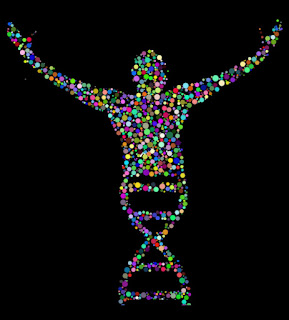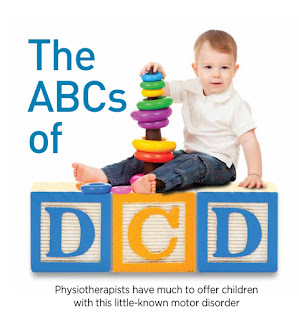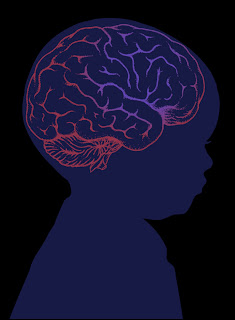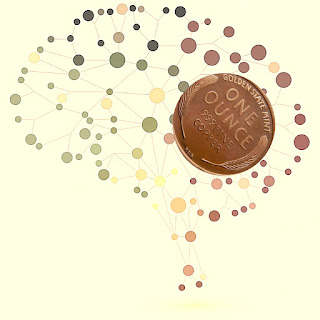"A PARENT'S GIFT"- CONSANGUINITY EXPLAINED..!! - BY DR. VANDANA PATEL (PT)
The word consanguinity comes from two Latin words: con meaning shared and sanguis meaning blood. Consanguinity is also known as Inbreeding.
When parents are from same ancestor, they are termed as “consanguineous”. When we put it in a simpler form it means that they both carry the same type of genetic picture. This can further give us the possibility to understand that they both carry the same faulty gene variation; if that is so then there is an increased chance of having a child with any genetic conditions.
“YES...WE HAVE GOT IT FROM OUR PARENTS!!”
You read it write. All of us get our traits from our parents, as our genetic information is passed down to us from our parents, grandparents, great grandparents and so on. The blood relations that we share make us more liable to have same genes. This is why we share a greater bonding or a close relationship with blood relatives compared to unrelated people.
The
closer the biological relationship between relatives is, the more likely that
they will have a gene variation in common.
Let’s check out the proportion of gene similarity based on relationships.
CHROMOSOMES:
Each cell in human being has enormous amount of DNA. Each cell contains a complete copy of a person's genetic instructions, or genes, packaged on chromosomes. Chromosomes come in pairs, giving two copies of each gene. Genes code for the proteins our body needs to function.
Sometimes there is a mutation, a change in a gene or genes. A variation that makes the gene faulty is called a mutation or a pathogenic variant. The mutation changes the gene's instructions for making a protein, following which the protein does not work properly or sometimes it can be missing entirely. This can cause a medical condition called a genetic disorder. This mutation in a gene will affect the body in various ways depending on how much it changes the resulting protein, how critical that protein is to the body and how much of that protein is needed in the body.
These mutations can be deletions, duplication, inversions or trans-location from one chromosome to another. They can often have profound clinical consequences.
Genetic disorders can be of multiple varieties.
1. Mendelian disorder: It is caused by mutation of a single gene. These disorders can be of three major categories;
- Autosomal dominant disorders: These disorders are those in which a patient manifests clinical symptoms when only a single copy of mutant gene is present. Males and females who are affected; both are likely to transmit the disorder to offspring of both sexes.
- Autosomal recessive disorders: These disorders are clinically apparent only when the patient is homozygous for the disease, which means both the copies of the genes have to be mutant to produce a disease. Males and females are affected in equal proportions. The parents of affected children may be clinically normal but the carriers of the mutation.
- X-linked disorders: In these disorders, mutation occurs on the X- chromosome. The severity and clinical risk of a disease differ between males and females as females have two copies whereas males have only one. X- Linked disorders may also have recessive and dominant pattern like autosomal disorders. However, these distinctions refer only to females. Males, having only one X- chromosome are expected to exhibit the full syndrome whenever they inherit the mutation.
However, when parents are consanguineous, they do not have an increased chance of having a child with genetic conditions that are due to X-linked or autosomal dominant gene mutations.
But
there can be some increased chance of a child inheriting conditions that are
due to a number of different genes acting together or where there is an
interaction between genes and the environment such as in the case of
Multi factorial disorders; spina bifida and some forms of congenital heart
diseases.
In
communities with a tradition of first cousin marriage or where the couples are
closely related than the first cousins; are more prone to have a child with an
autosomal recessive genetic disorder.
To put it in a nutshell, If the ancestry of the parents is clear, genetic testing may be possible to determine if they are carriers of more common recessive conditions. Genetic counselling is required to estimate the possible impact on children resulting from the couple’s family relationships to overcome the complications which may result from consanguinity.
🎁🎁🎁🎁🎁🎁🎁
References:Fact Sheet 18 | When parents are related (consanguinity) (Center for genetic education)
Polin RA, Fox WW, Abman SH. Fetal and Neonatal Physiology: Expert Consult-Online and Print. Elsevier health sciences; 2011.







Very well presented Vandana with a eye catching title !
ReplyDeleteThis topic is missed in recent years .
beautiful 😍
ReplyDeleteWow👍👍as always
ReplyDeletePerfect reading material
ReplyDelete